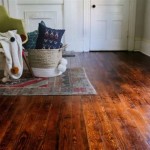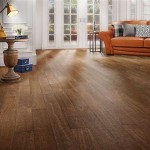Ceramic Vs. Porcelain Tiles For Floors: A Comprehensive Comparison
Choosing the right flooring material is a crucial decision for any home renovation or construction project. The flooring not only defines the aesthetic appeal of a space but also significantly impacts its functionality and longevity. Among the numerous options available, ceramic and porcelain tiles stand out as popular choices, each offering distinct advantages and disadvantages. This article provides a detailed comparison of ceramic and porcelain tiles, focusing primarily on their suitability for floor applications, to assist in making an informed decision.
Understanding the Composition and Manufacturing Processes
Ceramic and porcelain tiles both belong to the broader category of ceramic materials, sharing a common foundation in their manufacturing process. However, key differences in their composition and how they are produced result in variations in their properties and performance. Understanding these differences is fundamental in selecting the appropriate tile for a specific flooring application.
Ceramic tiles are typically made from a mixture of clay, sand, and other natural materials. This mixture is molded into the desired shapes and then fired in a kiln at high temperatures. The resulting tile is relatively porous and often coated with a glaze to provide a protective layer and desired finish. Glazed ceramic tiles offer a wide array of colors, patterns, and textures, allowing for versatile design options.
Porcelain tiles, on the other hand, are crafted from a finer clay mixture that includes a higher proportion of kaolin and feldspar. This refined mixture is subjected to even higher firing temperatures and pressures than ceramic tiles. This intensified process results in a denser, less porous material with superior strength and durability. Porcelain tiles can be either glazed or unglazed, with unglazed options often referred to as "through-body" porcelain because the color and pattern extend throughout the entire thickness of the tile. This makes them more resistant to chipping and wear, as any damage is less noticeable.
The manufacturing process directly influences the characteristics of the final product. The higher density of porcelain tiles makes them more resistant to water absorption, staining, and scratching compared to their ceramic counterparts. This difference in density also impacts their frost resistance, making porcelain a better choice for outdoor applications in climates with freezing temperatures.
Analyzing Key Performance Characteristics
Several performance-related attributes differentiate ceramic and porcelain tiles, including water absorption, durability, maintenance requirements, and cost. These factors should be carefully evaluated in relation to the specific demands of the flooring project.
Water absorption is a critical factor, especially for flooring in areas exposed to moisture, such as bathrooms, kitchens, and entryways. Porcelain tiles exhibit significantly lower water absorption rates than ceramic tiles. According to industry standards, porcelain tiles must have a water absorption rate of 0.5% or less, while ceramic tiles generally have higher rates. This lower absorption rate makes porcelain more resistant to staining, mold growth, and damage from freeze-thaw cycles.
Durability is another important consideration, particularly for high-traffic areas. The denser structure of porcelain tiles translates to greater strength and resistance to scratching, chipping, and cracking. Porcelain tiles often have a higher PEI (Porcelain Enamel Institute) rating, which measures abrasion resistance. A higher PEI rating indicates greater durability and suitability for commercial or high-traffic residential applications. Ceramic tiles, while suitable for many residential applications, may show wear and tear more quickly in areas with heavy foot traffic.
Maintenance is a key factor in the long-term appearance and performance of any flooring material. Both ceramic and porcelain tiles are relatively easy to clean and maintain. Regular sweeping or vacuuming followed by occasional mopping with a mild detergent is typically sufficient. However, the lower porosity of porcelain tiles makes them more resistant to stains and spills, reducing the need for specialized cleaning products or intensive cleaning methods. The grout lines between tiles are often more susceptible to staining and discoloration, so regular cleaning and sealing of grout is recommended regardless of the tile type.
Cost is a significant factor in any construction or renovation budget. Generally, porcelain tiles are more expensive than ceramic tiles due to the more complex manufacturing process and higher quality materials used. However, the increased durability and longevity of porcelain tiles may justify the higher upfront cost in the long run, especially in high-traffic areas or applications where resistance to moisture and wear is critical. Installation costs can also vary depending on the tile size, pattern, and the complexity of the installation.
Evaluating Suitability for Different Flooring Applications
The choice between ceramic and porcelain tiles depends heavily on the specific application and the environment in which the flooring will be installed. Consideration should be given to factors such as foot traffic, moisture exposure, temperature fluctuations, and aesthetic preferences.
For high-traffic areas such as entryways, hallways, and commercial spaces, porcelain tiles are generally the preferred choice. Their superior durability and resistance to scratching and abrasion ensure that the flooring will maintain its appearance for a longer period. Through-body porcelain tiles are particularly well-suited for these applications, as any minor chips or scratches will be less noticeable.
In bathrooms and kitchens, where moisture exposure is a concern, porcelain tiles offer a significant advantage due to their low water absorption rate. This reduces the risk of water damage, mold growth, and staining. Ceramic tiles can still be used in these areas, but proper sealing and maintenance are essential to prevent water penetration.
For outdoor applications, such as patios, decks, and walkways, porcelain tiles are the more durable and weather-resistant option. Their low water absorption rate makes them resistant to freeze-thaw damage, which can cause cracking and deterioration in colder climates. Ceramic tiles are generally not recommended for outdoor use in areas with freezing temperatures.
In residential spaces with moderate foot traffic and limited exposure to moisture, ceramic tiles can be a cost-effective and aesthetically pleasing choice. They offer a wide range of colors, patterns, and textures, allowing for creative design possibilities. Ceramic tiles are also easier to cut and install than porcelain tiles, which can reduce installation costs.
The aesthetic considerations also play a vital role in the selection process. Both ceramic and porcelain tiles are available in a wide variety of styles, including those that mimic natural stone, wood, and other materials. The choice ultimately depends on the desired look and feel of the space. Large format tiles, regardless of whether they are ceramic or porcelain, are becoming increasingly popular due to their ability to create a seamless and modern appearance.
In conclusion, the selection between ceramic and porcelain tiles for flooring requires a careful assessment of the project's specific needs and constraints. Porcelain tiles offer superior durability, water resistance, and weather resistance, making them ideal for high-traffic areas, moisture-prone environments, and outdoor applications. Ceramic tiles provide a more cost-effective option for residential spaces with moderate traffic and limited moisture exposure. By understanding the key differences in their composition, performance characteristics, and suitability for various applications, it becomes possible to make an informed decision that balances aesthetic appeal, functionality, and budget considerations.

The Difference Between Ceramic And Porcelain Tiles

Porcelain Vs Ceramic Tiles For Floor Heating Blog Warmup Usa

مجله سرام پخش Porcelain Vs Ceramic Tile How To Choose The Best Type For You

The Pros Of Porcelain Tile Over Ceramic 5 Compelling Reasons To Choose Carpet Palace Flooring Superstore

What Are The Differences Between Porcelain Tiles Vs Ceramic Paetani Buildwell Pvt Ltd Pbpl Blog

Porcelain Tile Vs Ceramic Straight Line Construction

Ceramic Vs Porcelain

Porcelain Tile Vs Ceramic What Are The Differences Lx Hausys

Porcelain Vs Ceramic Tile Unveiling The Key Differences

Porcelain Tile Vs Vitrified A Comprehensive Comparison








